Wildflowers! We’ve had double the average rainfall this year in the Tucson area and the wildflowers are loving it! This post will focus on botany, with a reptile thrown in.
Our March wildflower quest started with a hike up King Canyon in Saguaro National Park (West). The Arizona Native Plant Society had planned a field trip to the canyon, so we decided to go a few days earlier on our own. This Desert Wishbone bush was the featured photo on their Facebook page advertising the trip, so we were happy to find it early in the day. The bush has quite a small flower and is easy to overlook.
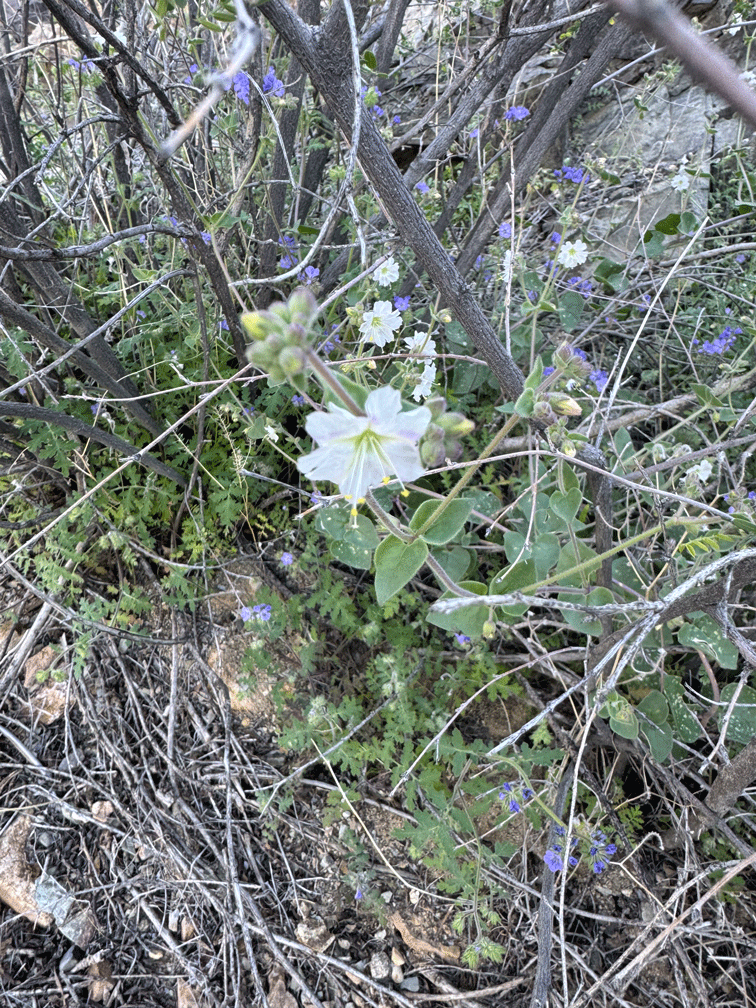
We’ve shared photos of penstemon before on blog. However, this was the tallest specimen that we’ve seen in the “wild” (meaning, not the Desert Museum). Parry’s penstemon is native to the Sonoran desert and blooms in March and April.
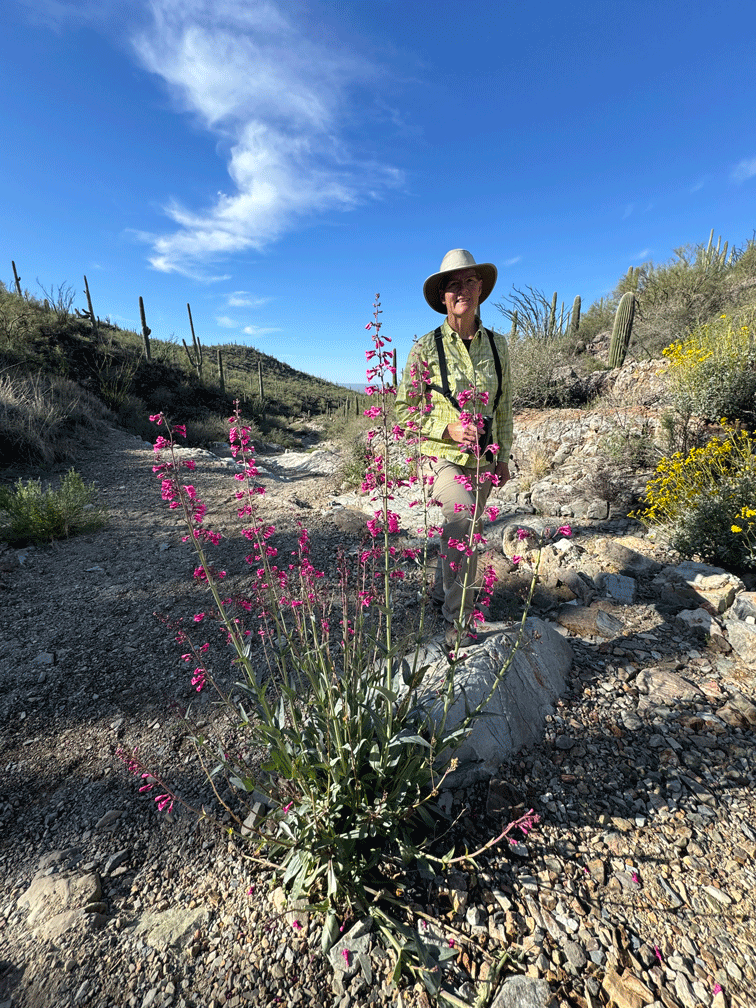
A close up of Penstemon parryi.

The “main event” flower was Crossosoma Bigelovii, or ragged rockflower. It likes to grow out of rock crevices, so it’s not able to be cultivated.
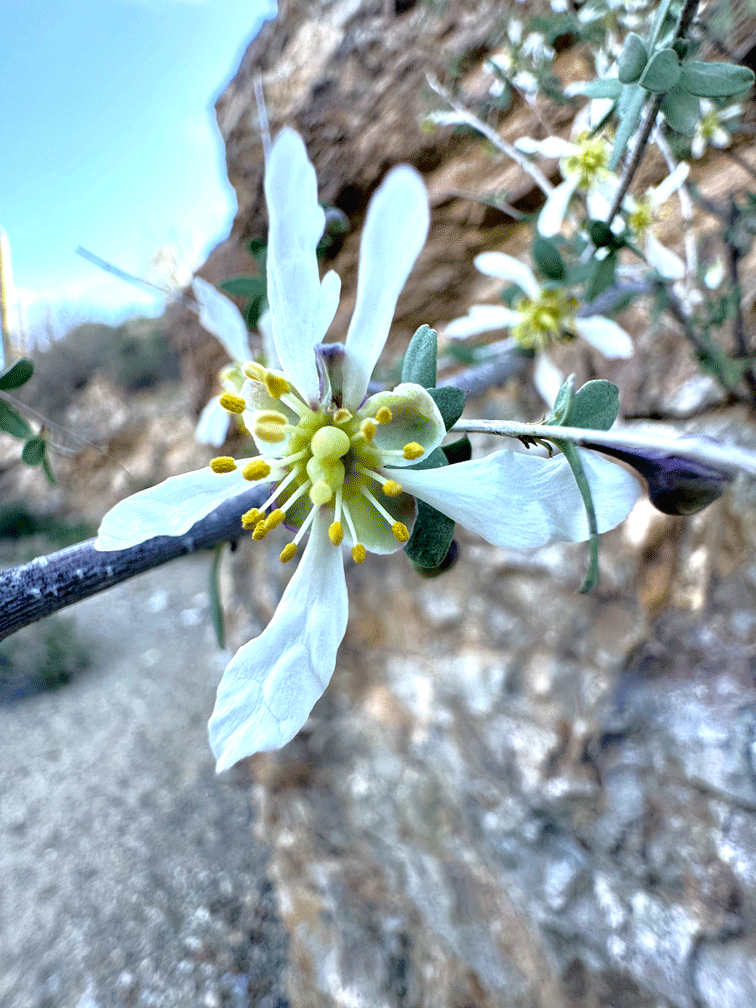
It has a pleasing jasmine-like scent. We only saw one of these plants on our hike.

Farther up the canyon, there is a rockwall covered with petroglyphs. Doug is pointing yo some of them in the photo below. Every crack that holds a bit of soil has a plant growing out of it.

We climbed out of the canyon and followed Sendero Esperanza west until it joined the Gould Mine trail. There was a blooming Ocotillo overhanging the trail along this section.
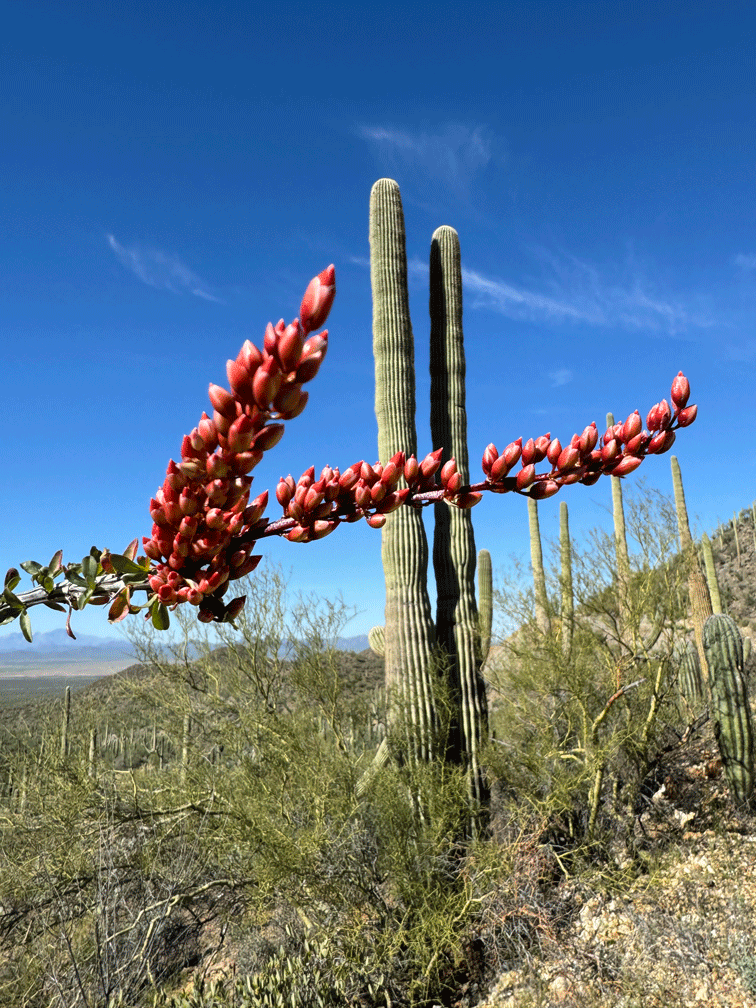
This is a close-up of Allonia incarnata, a flowering plant in the four o’clock family. The flower is about the size of a quarter. It’s the last wildflower photo that we included from this hike, although we saw several other flowers that day.

In March, we have generally done most of our hiking from our doorstep. We realized that we enjoyed the solitude, the scenery and the convenience of not having to drive to a trailhead. We have discovered multiple trails so we can enjoy a short 45 minute hike or extend it to two or three hours. Here’s a view looking south over the teddy bear chollas and saguaros towards Wasson Peak in Saguaro National Park.
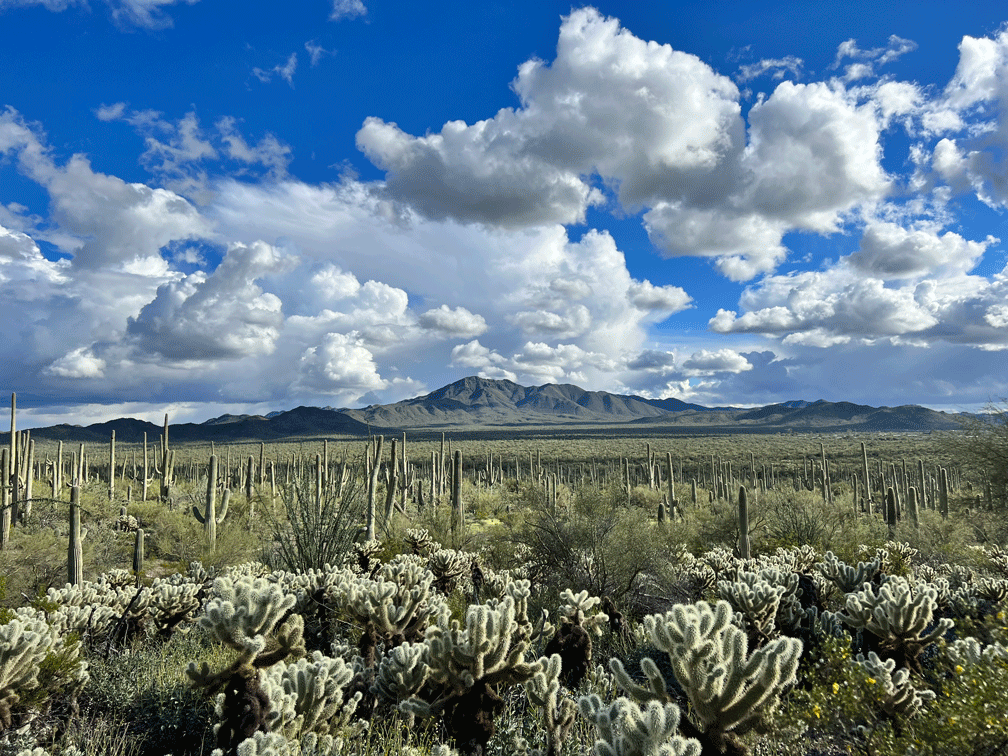
The scorpion weed made a carpet of purple on one of our hikes.
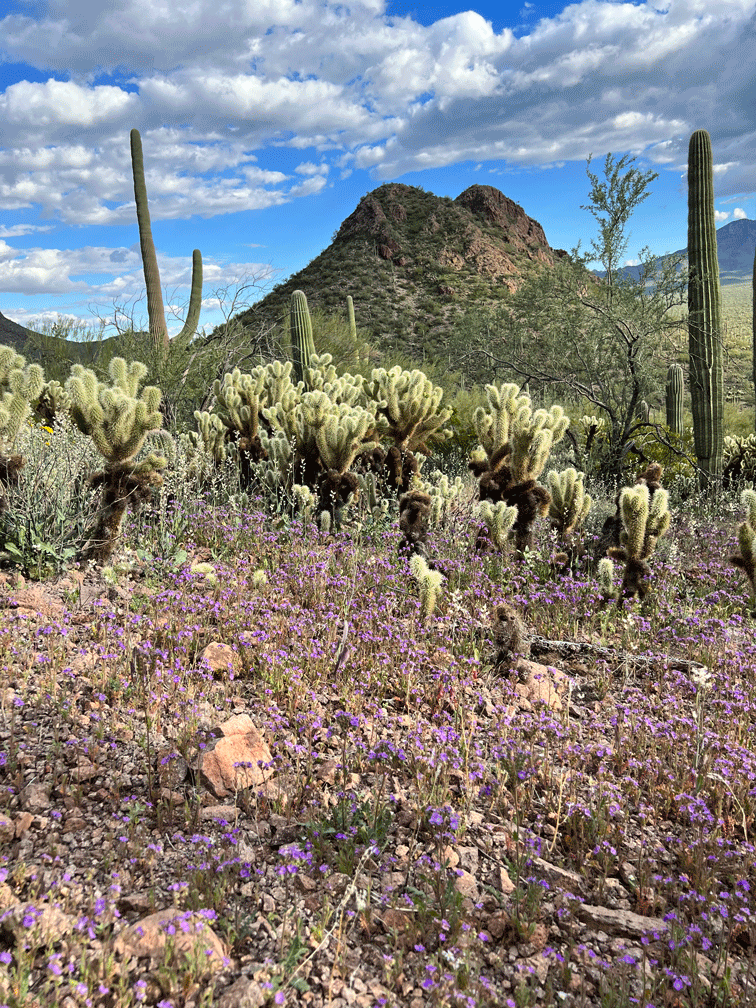
If you look closely in the photo above, you might notice some slender whitish flowers. They are Lyreleaf jewel flowers (streptanthus carinatus). A bee happened to visit one of the flowers as Wendy was taking a photo.

We had never seen this bush in flower in the last four years, but the moisture this year allowed it to flourish. It’s a species of rhatany known as Krameria erecta. It’s very heather-like, and unlike most desert bushes, doesn’t have any thorns.

The buckhorn cholla is sending out new growth and it looks very flower-like.
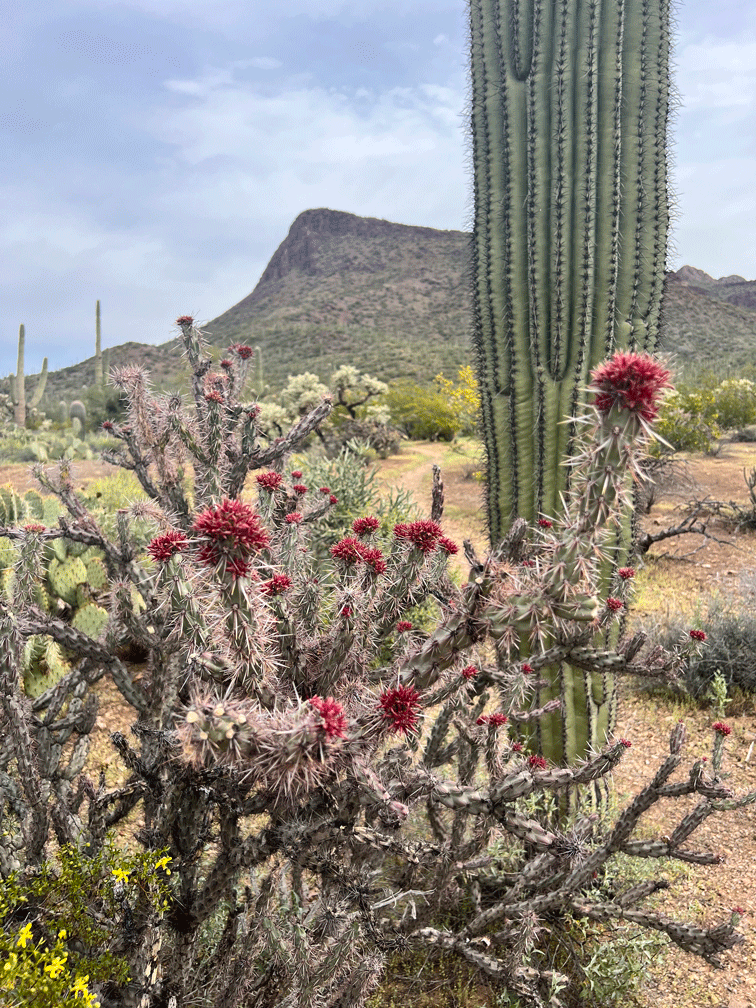
Here’s a close-up. We passed this cactus and few days later, and the red had faded to green.

Here’s an Ocotillo with autumn colours. It used to be a lush green and it is now turning colour similarly to how deciduous leaves turn colour in the fall where we live in BC. It makes sense, because it is coming to the end of its growing season. It will be dormant in the heat of the early summer and sprout green leaves when conditions are right again.

At the end of March, Wendy walked from Cam-Boh picnic area back to our place (about an hour) and was surprised to see this hedgehog cactus in full bloom. It’s the first of the season; mostly we see this species bloom a little later.
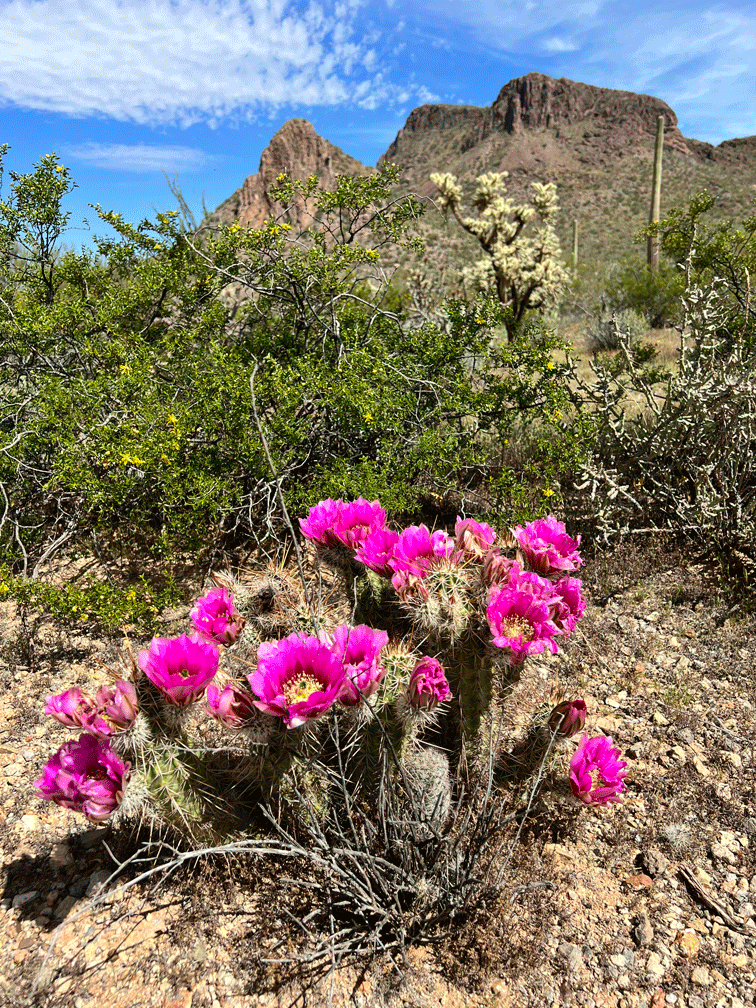
We made a special visit to a saguaro that we saw start to bud last year to see how long the arms had grown. The first photo was from February 23, 2023 and the next one from March 27, 2024.

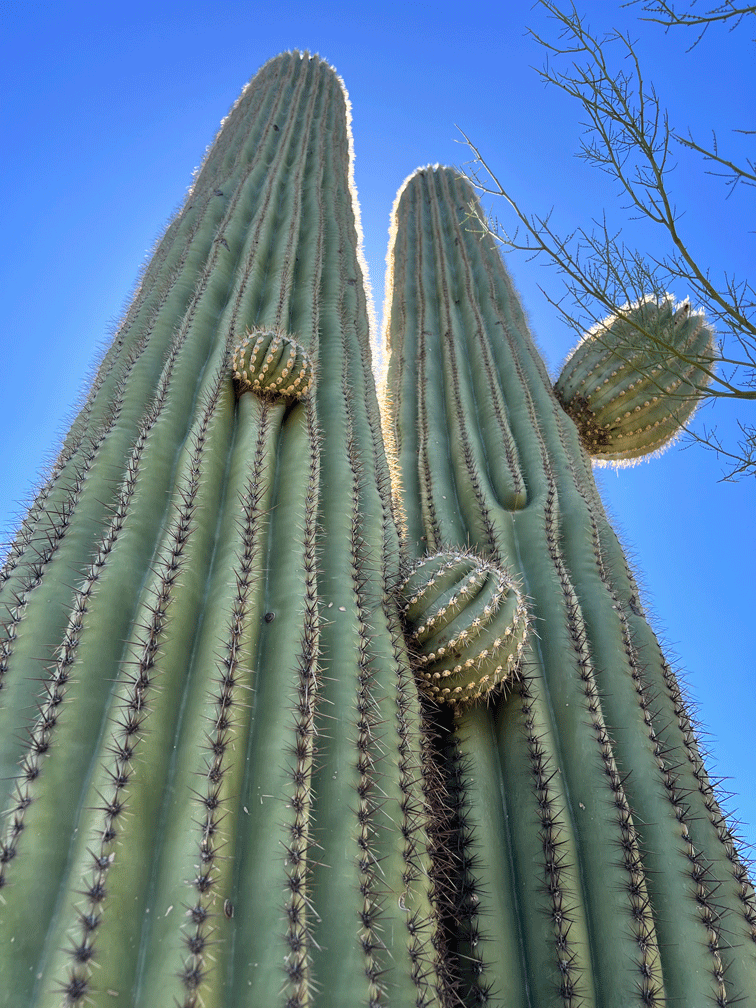
The next couple of photos were taken at the Arizona-Sonora Desert Museum.
Here, the Kingcup cactus, a variety of hedgehog cactus is just starting to bloom.

These Notch-leaved Phacelia provide nice contrast to the cactus.

Now to introduced flowers. In Madera Canyon, this plum tree is growing wild, producing beautiful blooms. It was likely planted near a cabin, which has long ago disappeared.

Our neighbour grew this flower in a raised bed along with some lettuce. It’s a hibiscus called “Hawaiian Punch.” The vegetable gardening season is almost finished because it will soon be too hot.
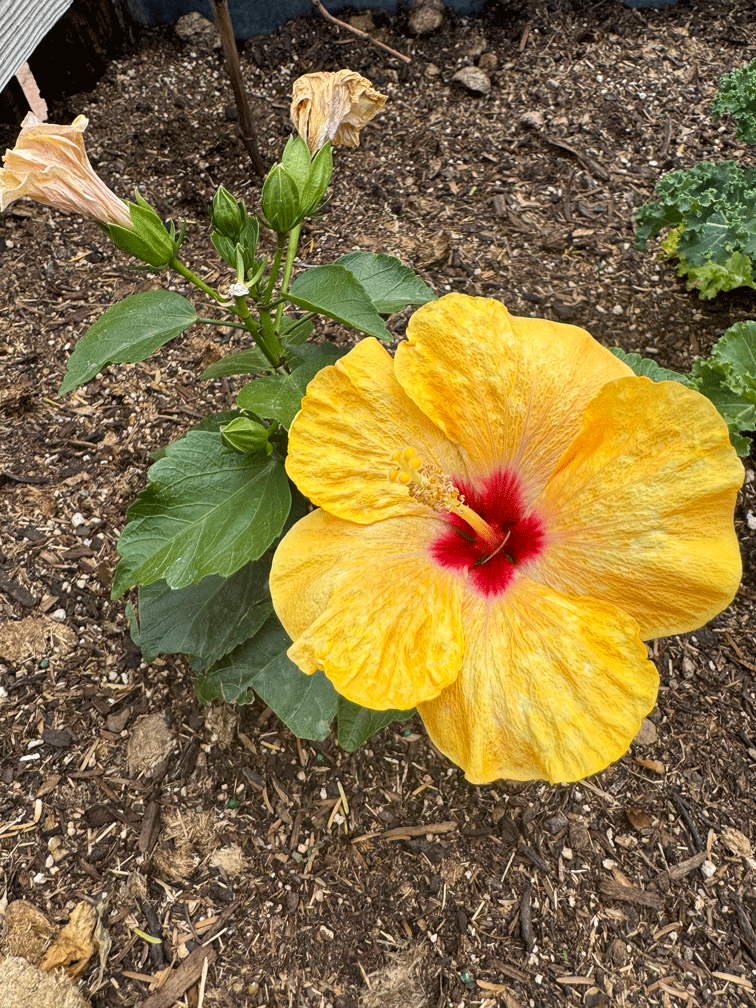
Now to our reptile sighting. One day on our bike ride on “The Loop” we encountered two rattlesnakes in the middle of the pavement, which we found were easy to avoid. This one is a Western Diamondback. It was spread out across the bike lane as we approached, and we watched a cyclist run over it. It then curled up, but didn’t look injured. It’s nice that an iPhone can zoom in a long ways so Doug didn’t get very close for the photo. We guess that both snakes were warming up on the dark surface.

Of course we will end the blog post with a sunset photo. This one is almost magical.

We hope you enjoyed all the flowers and plant life. We also saw plenty of birds which will be posted soon in the our second blog of March, 2024.
Love all of the flower photos.
LikeLike